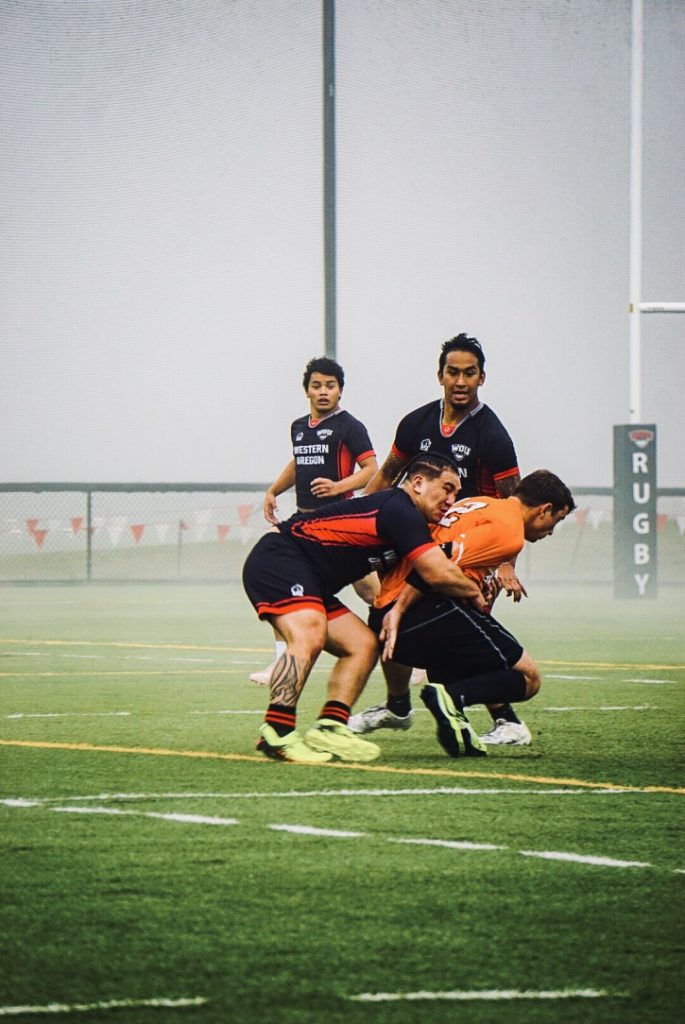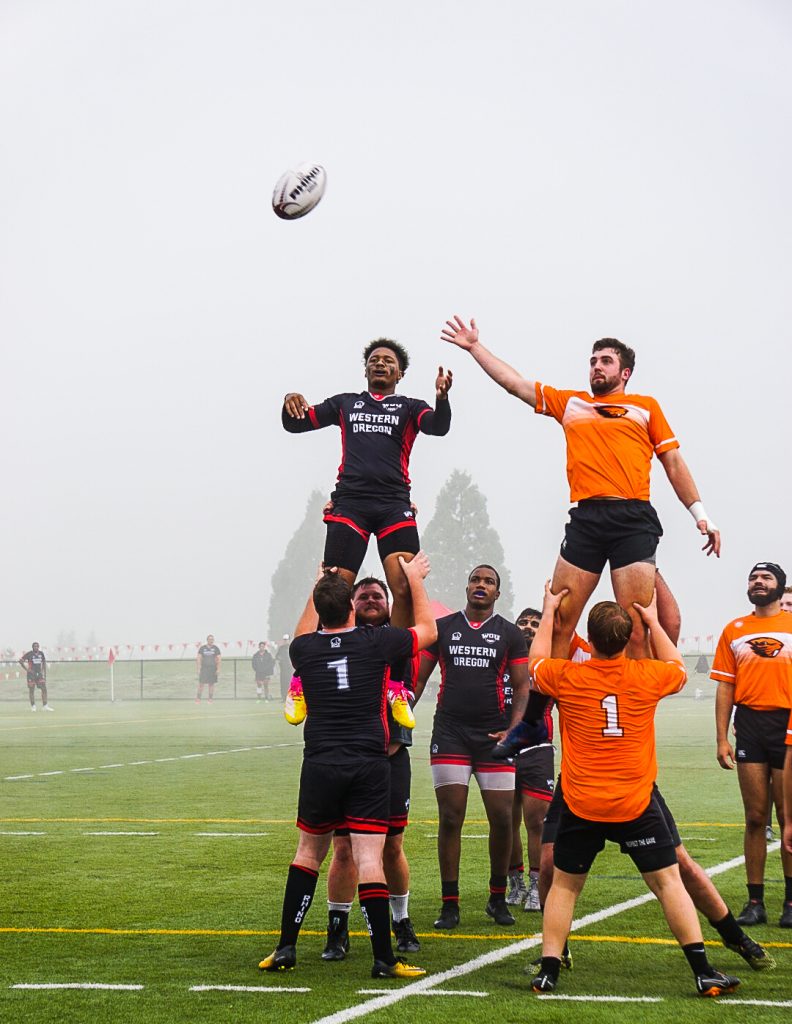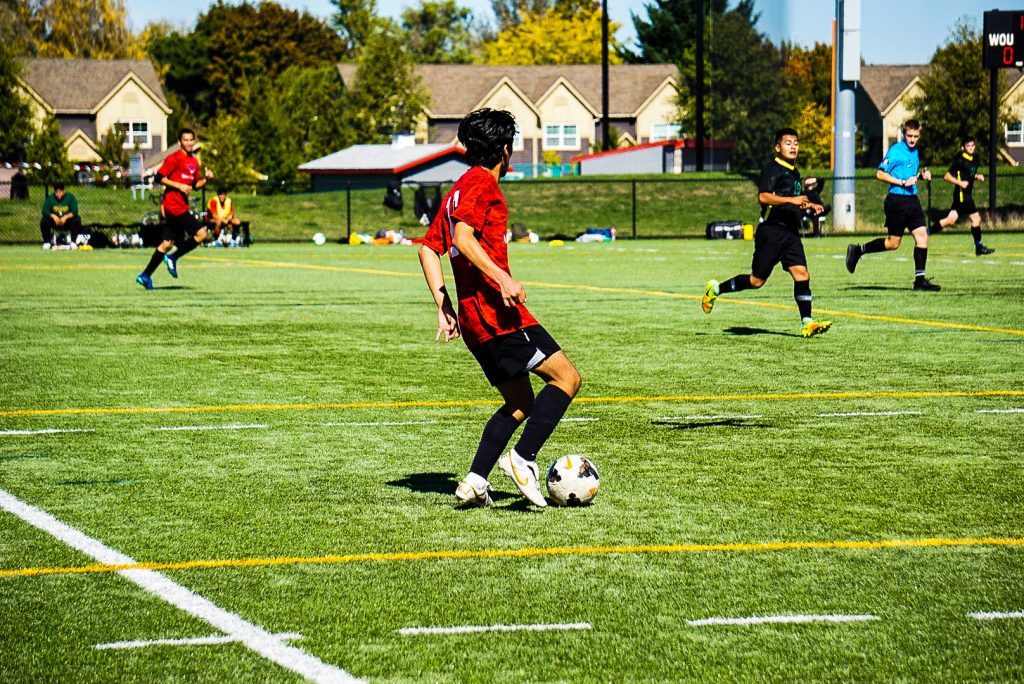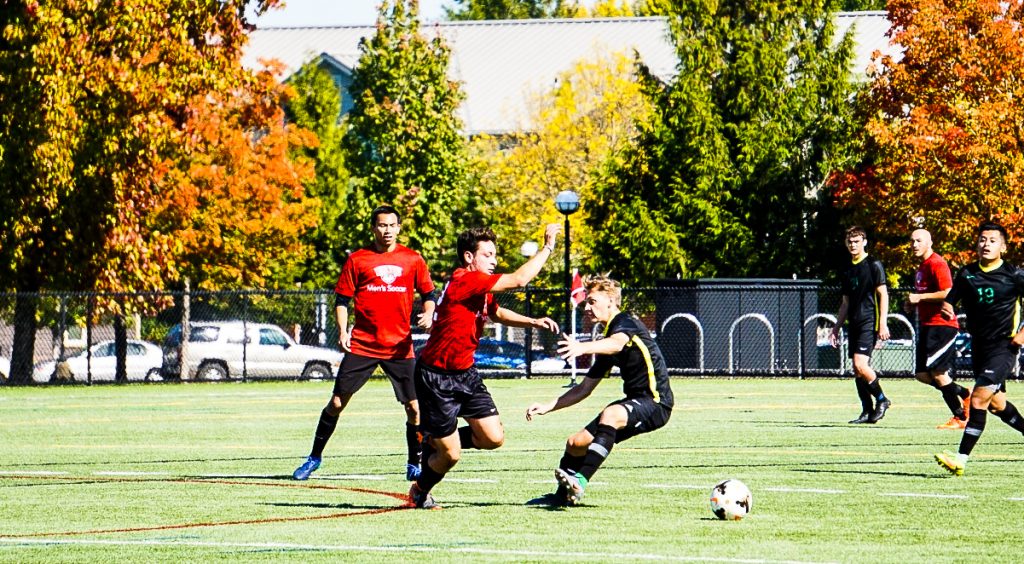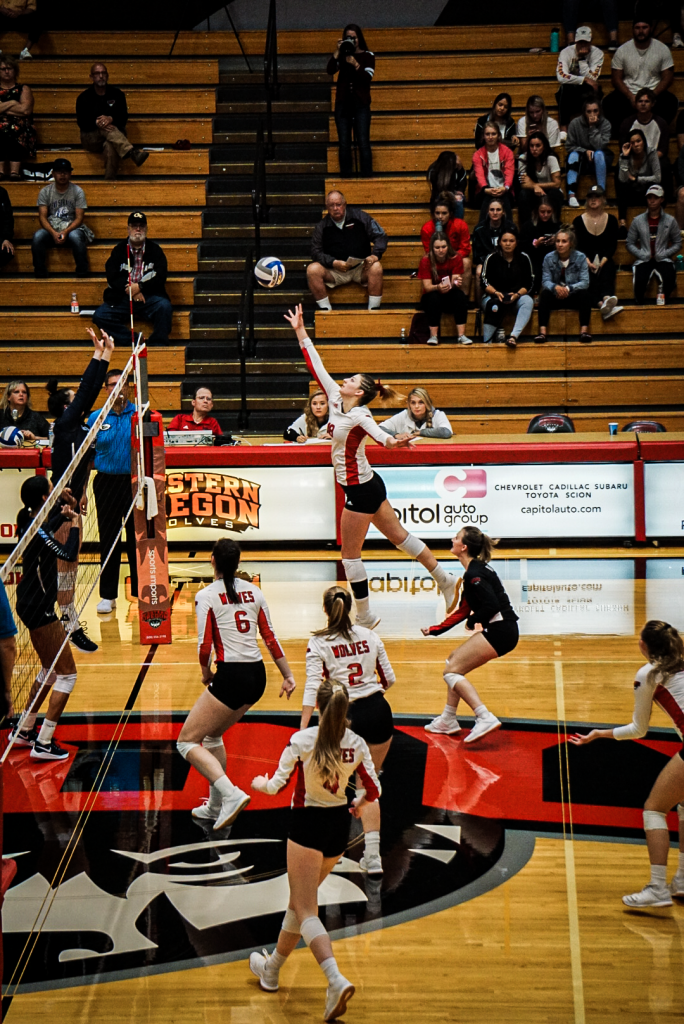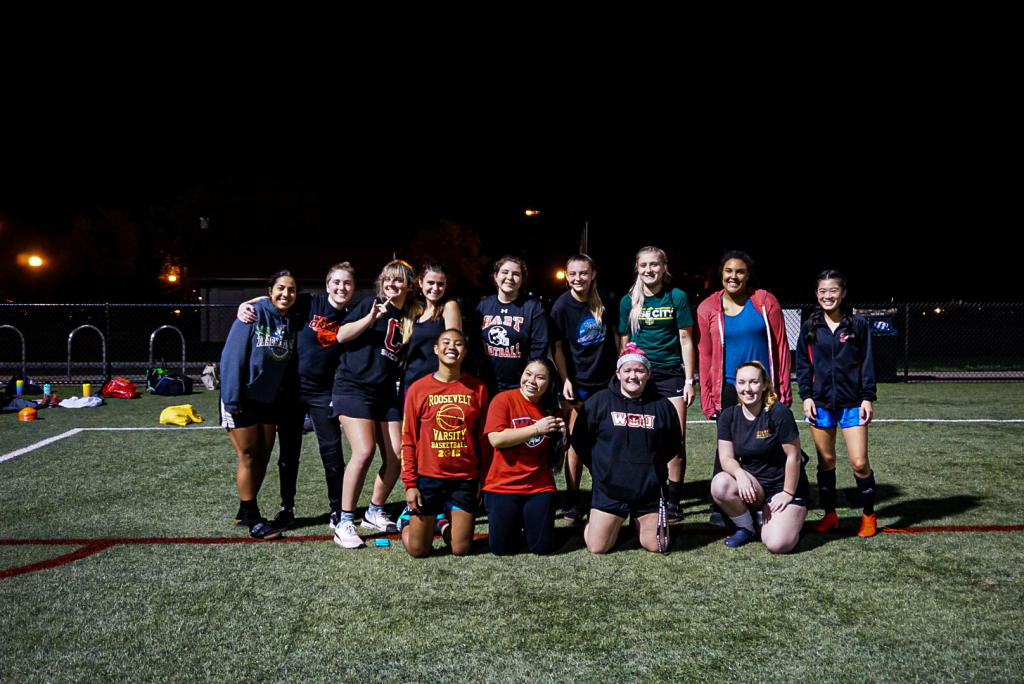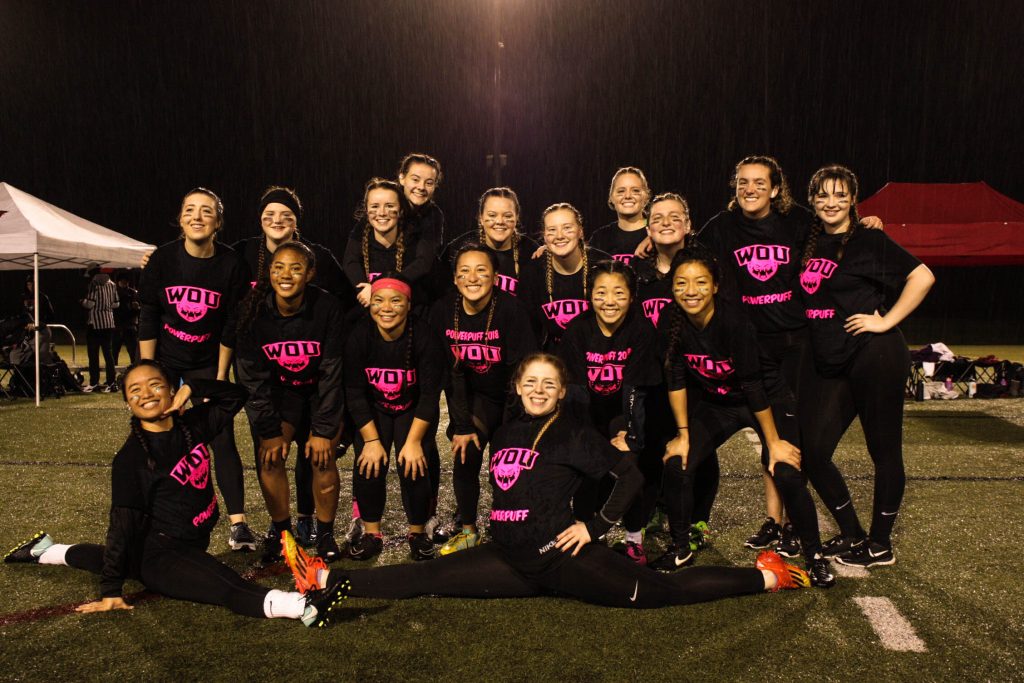
Caity Healy | Managing Editor
In 1978, one of the first recorded Powder Puff games — now referred to as the Power Puff game — made its way to Oregon College of Education. Off-campus, dressed in all black, took on On-Campus, sporting lighter colors. In an intense match — with the male cheerleaders hyping up the spectators — the Off-Campus team took the win 22-0. Flash forward to 2019, and the scoreboard looked pretty similar.
Although this is being referred to as the 40-year anniversary, the game actually goes back at least 41 years. 41 years of On-Campus versus Off-Campus with a very obvious trend — the win typically goes to Off-Campus. 2019 was no exception.
The cold weather and rain couldn’t put a stop to the energy of the two teams on Oct. 18. As the black-shirted Off-Campus went head-to-head against the pink-shirted On-Campus, it was clear that the ones in black wouldn’t hold back. Immediately, player D-Dre Wright caught a pass and ran the ball all the way into the end-zone without being touched by a single player. The Off-Campus team took the first touchdown of the game just 20 seconds into the competition. In 2018, when On-Campus narrowly lost to Off-Campus with a tight score of 7-6, D-Dre Wright was one of the On-Campus MVPs.

After the first touchdown, the play continued to be one-sided with On-Campus constantly on defense. Score after score, the game went into halftime with Off-Campus up 19-0.
The teams huddled at the half to figure out adjustments needed for the second half. After a lengthy break, the teams made their way back and the play began again. Similar to the first half, Off-Campus was on offense for most of the remainder of the game. However, On-Campus was able to hold them off, preventing them from scoring again in the entire half. But, On-Campus wasn’t able to find the endzone either, leaving the final score 19-0 in favor of Off-Campus. In the common theme of Power Puff competition, Off-Campus was once again victorious.
Senior Mikaela Wong, a fourth-time Off-Campus player and fourth-time winner, shared how the win felt for her and her team.

“You’d think I’d get used to it by now but it’s the same level of excitement every year,” Wong said. Wong went on to explain how the team was able to secure the win more easily this year, rather than the narrow win in 2018.
“We really just settled in and had three really simple plays and kept running those over and over again. Last year, the plays were more complicated,” Wong explained. Player Rachel Koljesky added that, “everyone was definitely open with communication if they didn’t know or if they weren’t comfortable with their position so we could change it.”
To close out, Koljesky explained, in brief words, how the team felt after securing the win: “Oh, fantastic. Four-peat, let’s go.”
Contact the author at chealy16@wou.edu
Photos by Caity Healy


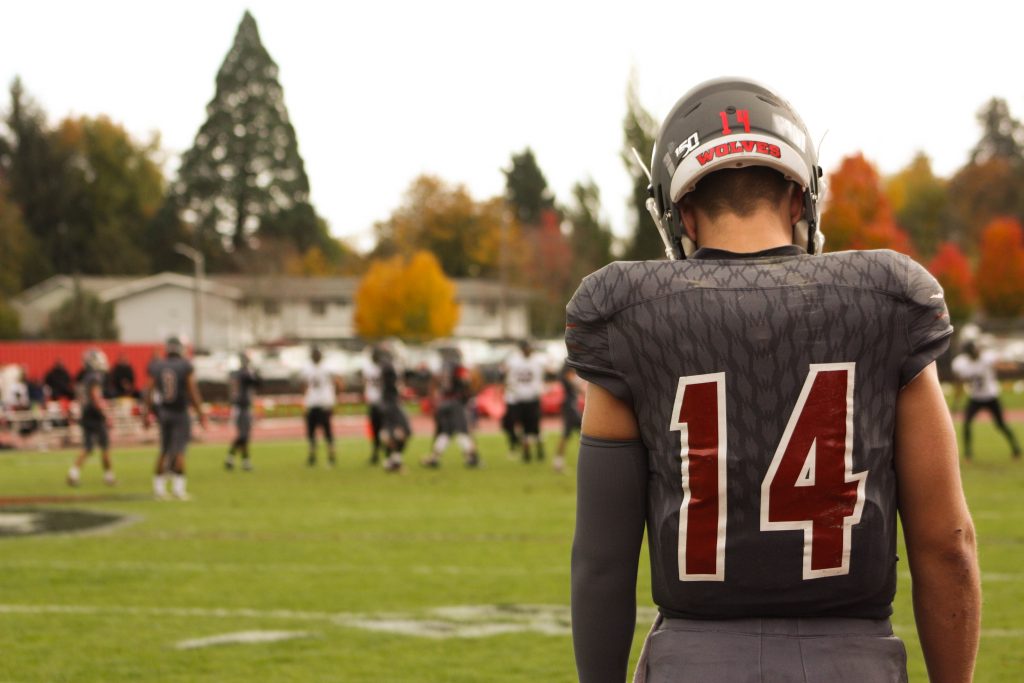

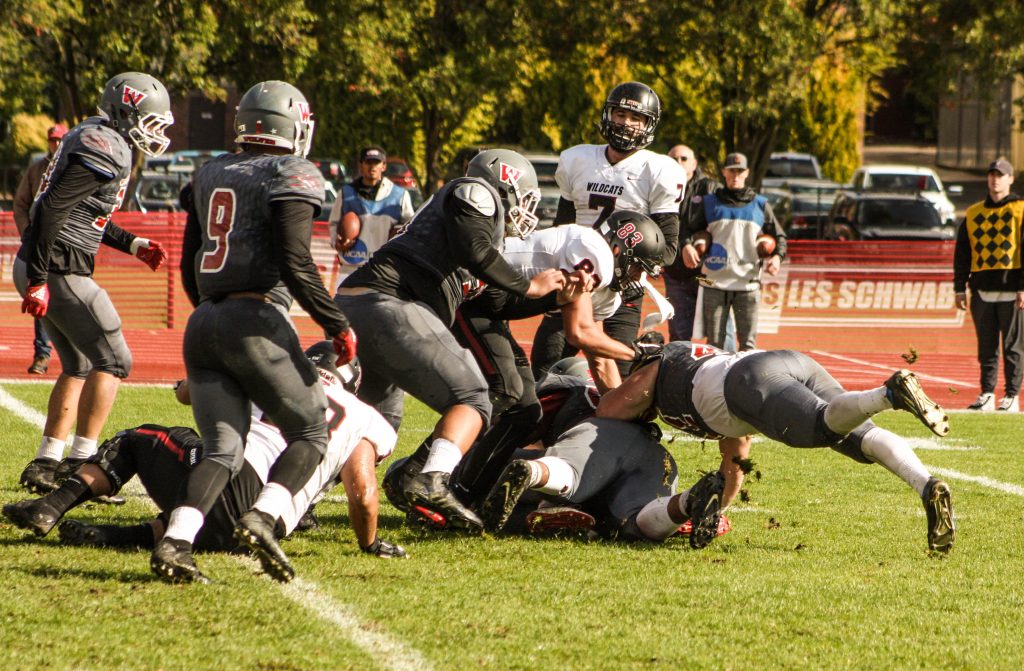
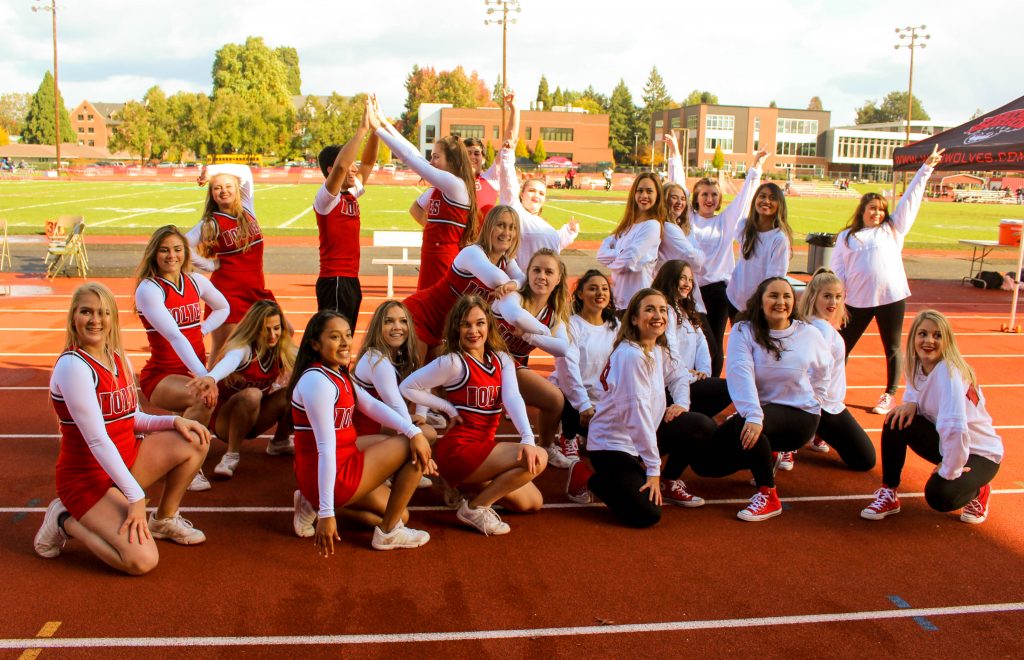
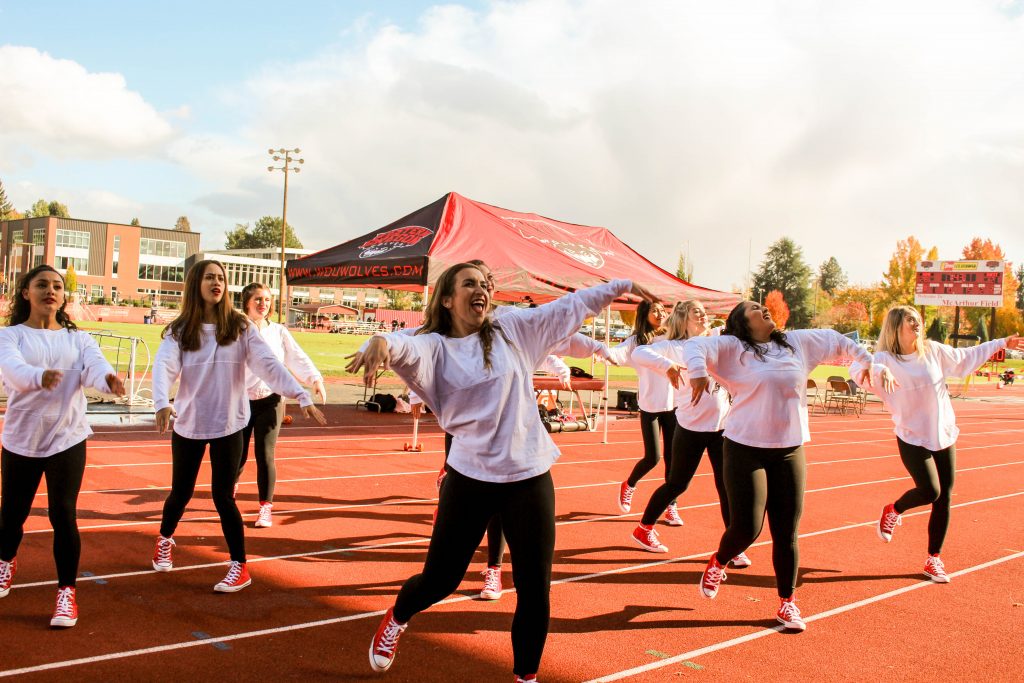
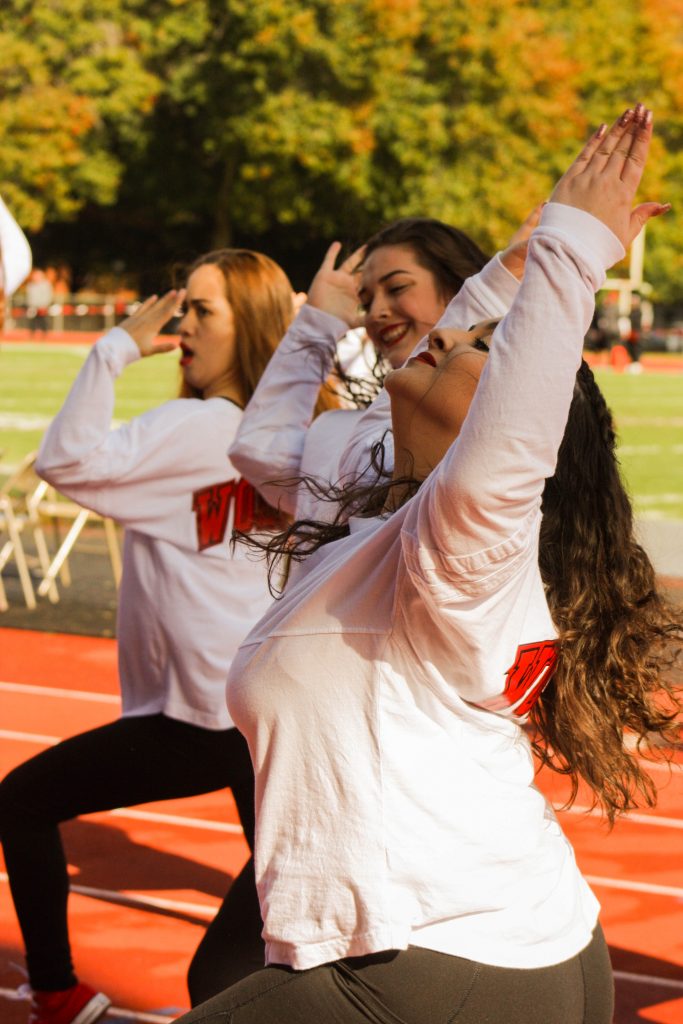
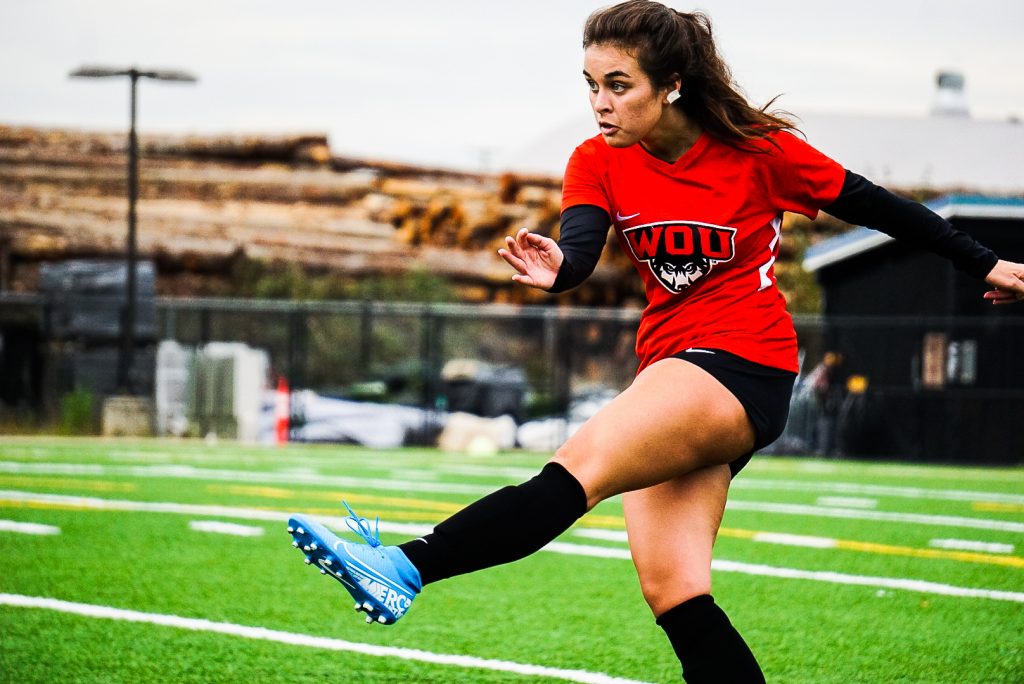 Hannah Greene |
Hannah Greene |

